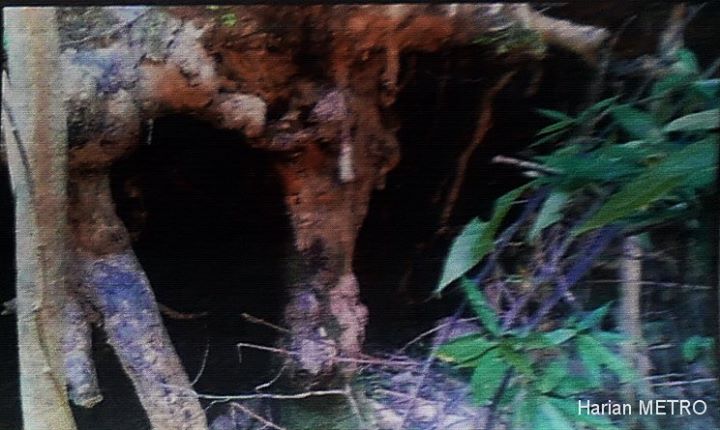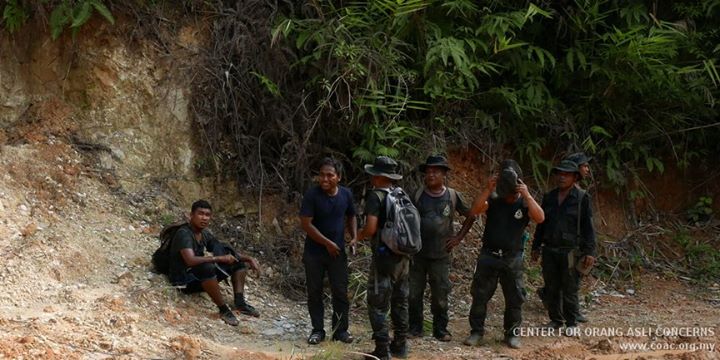Orang Asli NGO: The Kids Were Not Lost, They Hid Because They Were Too Scared Of Teachers
The Center for Orang Asli Concerns points out the real reason the 7 kids ran way from school and evaded detection although they were mere kilometres away from Pos Tohoi.
As search efforts to recover the remaining missing Orang Asli child intensifies, reports from various parties claimed that the children were most likely not 'lost', but rather, they did not want to be found
According to the Center for Orang Asli Concerns (COAC), discussions with the children's family members as well as reports from various quarters - including a firsthand account from one of the surviving girls - revealed that the 7 Temiar schoolchildren knew where they were and could've returned to Pos Tohoi if they wanted to
"The children knew where they were and could have returned to Pos Tohoi where the school and a major Temiar village are located. IF, in the beginning, they had wanted to do so," COAC wrote in a Facebook note. "The site where the girls were found is about 3km in a straight line from the school, or about 2 kilometres from the bridge and main logging road which is used by various people. It is not an impossible distance to travel even for small children, despite the terrain."
Initial media reports indicated that the children had run away from the school to escape from being punished for swimming in a river without permission.
However, it has since emerged that the ones who were caught swimming in the river were actually their elder siblings, who have been "beaten with a stick by a male teacher" for doing so.
he students at SK Pos Tohoi, Orang Asli supporters and family members.
Image via Centre for Orang Asli Concerns (COAC)Their elder siblings - 3 girls - were caught and punished on Friday, 21 August, with another punishment to be meted out on Sunday, 23 August. The elder children then disappeared from the school on Sunday, prompting their younger siblings to assume that they have gone home and wanted to follow them. "But the older ones later returned to the school on their own accord or were brought back in the afternoon. Only much later that day did the school authorities realize that the 7 were missing," COAC explained.
COAC suggested that the initial fear of being punished for running away kept the smaller children in "hiding mode" for a very long time. At one point, they planned to return to the school but were not able to do so due to their weak condition.
"According to one of the two surviving girls, all were alive for the first two weeks. They were able to survive on the available water and limited forest fruits and vegetables found in the area. But this was not enough to sustain them.
They took shelter in the root base of a large tree, with a hole big enough to accommodate them. They had also planned to return to the school but in their very weak condition, they just could not do so," said COAC's FB Note.
The children were taking shelter each night here. The northeast monsoon has already set in, with heavy rains common in the evenings.
Image via Harian MetroThe Note continued, "They then decided to remain where they were. The five younger children eventually succumbed to their weakened condition, with at least one (Haikal) being washed away by the fast-flowing waters when he tripped or fainted when he went to the river to get a drink. Two others were swept away when they slept close to the river."
To add, Malay Mail Online reported that there have been claims of ill-treatment and negligence from the teachers and wardens of SK Pos Tohoi, which may have led to the children developing such fear of being brought back to school
“My daughter told me they all slept on cement floors in the hostel, and were forced to wear dirty uniforms to class,” said Ayel Ajib, 48, the father of Ika Ayel, whose body was found on Friday.
Sobrie Latip, 25, father of Sasa, whose decomposed body was found on Wednesday, said his daughter had told him of teachers forcing pupils to look for a stick that was meant to be used as a cane.
“Sasa even told me she saw some seniors getting slapped across the face, and some were kicked like a football repeatedly,” he added.
In fact, when the 2 girls were spotted, their initial reactions were to run and hide. Only when rescuers talked to them in the local Temiar dialect were they willing to be rescued.
"This is not the reaction of someone who had been lost for 47 days and wanting to be rescued," COAC said.
It was also pointed out that the children could've been found much sooner if search and rescue (SAR) teams had expanded their search to the upstream of Sungai Perias, which was thought to be too difficult for the children to cross through
View of the Sungai Perias looking upriver from the bridge (which is not shown here but at the bottom left of the photo). The children were always on the bank of the river shown at left, with vegetation similar to that on the right. They were last 'settled' about 2 km from here.
Image via Centre for Orang Asli Concerns (COAC)According to COAC's Note, "Seeing that the children were last seen on the banks of this river, it would have been possible that they had stayed on it if they had wanted to avoid being caught, as by using the bridge they could have easily been spotted."
During a visit to the site on 8 September, 16 days after the children had gone missing, COAC asked Temiar leaders if they had searched upriver, to which they said, "No." They then asked Army personnel, who were searching in a nearby forest, the same question.
Army personnel and Education Department (JPN) boatmen with the sole Senoi Praaq (in dark shirt at left) stop for a breather before returning to base.
Image via COAC"They said no, as their orders were to search a 3km radius (later extended to 5km) fanning out from the bridge and along the logging road which led to the home villages of the children, some 25-40km away," said COAC. "As it turned out, the children were always on the right bank (geographically-speaking) of this river. Visually, this would be the left side of the river as you look upriver from the bridge, and on the side where the school and hostel are located. This was not in the 3km, 5km, 80km, 100km expanding search area of the SAR operation. Unfortunately."
COAC also claimed that when locals decided to check out the upstream of Sungai Perias after SAR operations yielded no results, they were not allowed to do so as there were orders that only official SAR teams could enter the area
"The order had come down to them that only official SAR teams could conduct the search and enter the area. The Orang Asli villagers, including the parents and their friends, were not allowed to help in the search," said COAC.
Search efforts have also been said to have been less than convincing, as a relative of one of the missing children said that the authorities tend to "indirectly hand over the responsibility" to villagers who assisted in the search as the terrain gets too challenging
The small team of Senoi Praaq (they search in pairs) with one of the supporters in our group from Johor.
Image via COAC“When all the villagers came to assist in the search, the authorities indirectly handed over the responsibility to us," said Latip Aban, 45, whose granddaughter Sasa Sobrie was one of the kids who went missing.
Latip said at the initial stage, villagers went deep into the jungle to locate the children along with the authorities.
“They would follow us, as we know the terrain here better, but when the trail got too challenging, a few of them turned back, leaving us to do the search,” he said.






